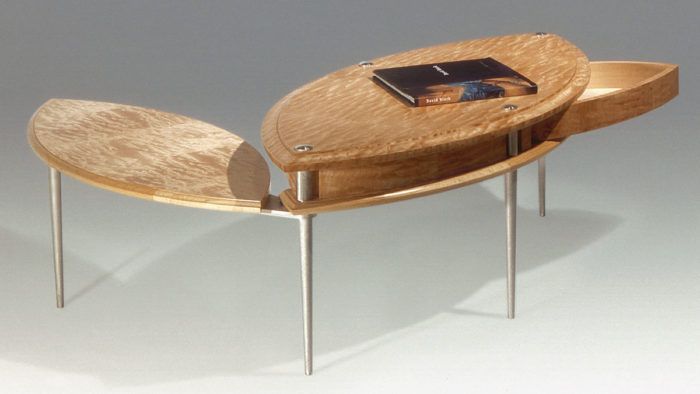9 Tips for Better Design
How to find new ideas and do justice to them
Synopsis: Furniture designer Michael Fortune finds inspiration in unexpected places: a leaf, a tree limb, the shape of a classic vase — even tire tracks in the snow. Sharing his broader approach to furniture design, Fortune tells aspiring designers how to look for and find inspiration, and how to incorporate that inspiration into your work.
Several times a year I have the opportunity to teach a two-week class in furniture design and construction. I enjoy the challenge of working with people who think they are incapable of designing their own furniture. Most of my students are mystified about where design ideas come from and how they are developed.
Most articles about furniture design begin with the classical orders—golden mean, Fibonacci series, etc.—and end with well-known period pieces. My broader approach to design was distilled from my training at a commercial furniture-design school in the early 1970s, and refined over my 30-year career as a furniture designer and maker. I’ve found that great design ideas can come from anywhere, and the standard rules can choke inspiration rather than free it. For example, look to other cultures and you’ll find ideas that will appear brand-new in your own. Some of the most obscure corners of history are hiding beautiful ideas that you can borrow and adapt.
After you find a rough idea that resonates with you, you’ll need to work out the overall proportions, lines, and details, guiding the design toward a successful conclusion. I’ll share my primary sources of inspiration, and some visual dos and don’ts that have worked for me.
If you are receptive, ideas can come from almost anywhere. In design school, my instructor’s interest in three-dimensional puzzles spilled into his furniture. I admired the unusual origin of his designs, and was inspired to look differently at objects around me.
Almost anything from any culture—bridges, buildings, fine art—can inspire a design. If it strikes you as beautiful, it probably will resonate with others. Better yet, they won’t know exactly why. When walking through a museum with my children, I came across a vase made in Mesopotamia about 6000 B.C. Captivated by the simple elegance of the shape, I returned to my workshop and doodled casually in an effort to convert the profile of the vase into the profile of a table leg and apron.
If you like gardening or the outdoors, natural forms are worth exploring. Plant stalks can become table legs, and leaves might inspire shapes for tabletops. If you are intrigued by structures like bridges, dams, and buildings, they can inspire any number of table bases.
From Fine Woodworking #140
For the full article, download the PDF below:
Fine Woodworking Recommended Products

Sketchup Class

Drafting Tools

Blackwing Pencils






















Log in or create an account to post a comment.
Sign up Log in